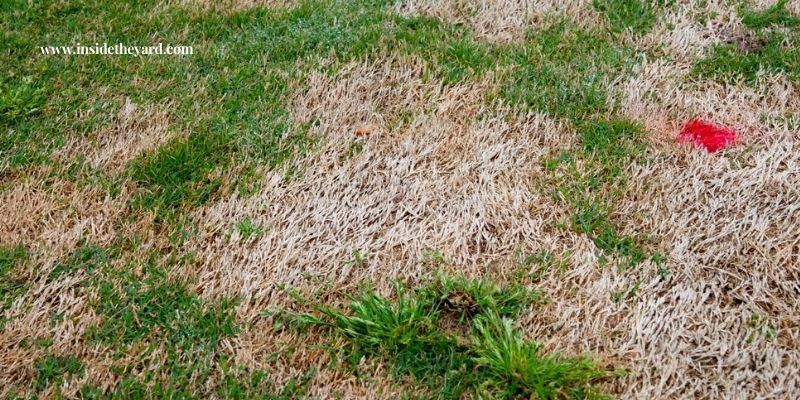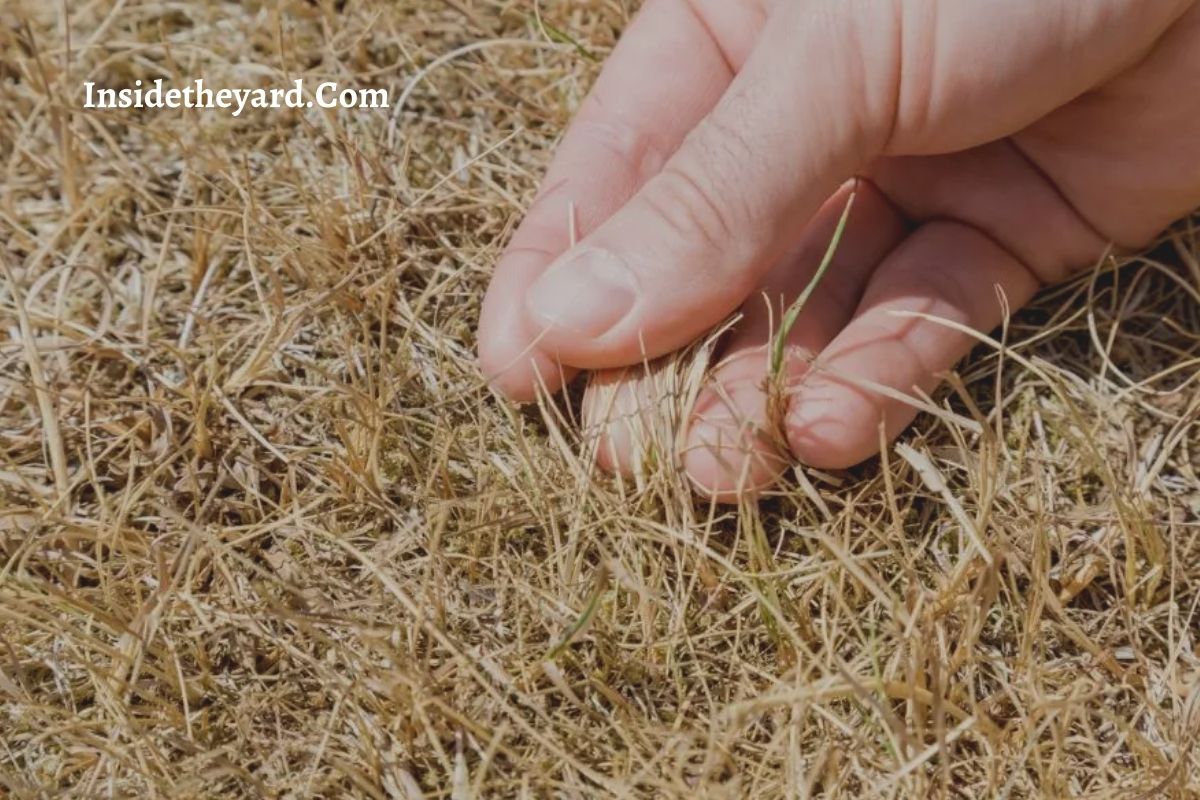Why has my grass turned white after fertilizing? The cause is likely one of two things: powdery mildew or sick grass.
Maintaining a healthy lawn requires frequent fertilization, mowing, and trimming the top. However, you’ve recently noticed that some areas of your grass appear to be white. For many homeowners, this is a common issue.
Nobody likes white grass after fertilizing in their yard. There’s a slew of possible explanations for why your lawn has become white. We’ve gone through each of them along with possible solutions.
Why Has My Grass Turned White After Fertilizing?

As a homeowner, the white grass issue after fertilizing is a typical problem. Several factors contribute to this issue. The following are plausible causes and also solutions that how to fix white grass in your lawn:
| Reasons | Solutions |
| Powdery mildew | Increasing sunlight + using powdery mildew-resistant grass seed |
| Gray leaf spot | Reduce nitrogen fertilizers |
| Herbicide’s side effects | Limited use of herbicide |
| Mineral deficiencies and fertilizer burn | Apply a slow-release fertilizer evenly |
Now that you know the possible reasons and solutions, let’s check them out in detail.
1. Powdery Mildew
Powdery mildew is one of the common care asonsses of grass turning white after fertilizing. Here, you’ll observe white dots or streaks of white powder sticking to your green grass. Kentucky Bluegrass is a type of grass in which this problem is prevalent.
Powdery mildew is a fungus, like many other grass diseases. However, typically not invasive. It’s particularly prevalent in lawn areas that are shaded for the majority of the day. You’ll find it near trees, buildings, and fences and in areas that receive little sunlight.
Solutions Are As Follows:
Increase Sunlight Exposure on Your Lawn
Powdery mildew flourishes in shaded situations. Therefore, you can fix it by increasing the intensity or number of hours of sunlight.
Apart from that, you should increase the air movement around your lawn. It’ll help you turn your white patches into green grasses.
Use Powdery Mildew-Resistant Grass Seed
If you ever face a powdery mildew problem or are still dealing with it, try updating or overseeding with some effective mildew-resistant grasses like the Kentucky Bluegrass. Furthermore, it can tolerate greater shade, making it an excellent choice for shaded settings.
Some additional grasses that might thrive in the shade include fine fescues, fine-textured perennial ryegrasses, and ryegrasses, tall fescues, and good old-fashioned Bermuda grass.
2. Gray Leaf Spot
On grass blades, gray leaf spot infection also forms white or bleached patches. The condition is caused by the fungus – Pyricularia grisea. The fungus flourishes on warm, humid, over-watered and over-fertilized lawns. Typically, the white dots are complemented by dark grass blade tips.
Solutions Are:
Reduce Nitrogen Fertilizers
Nitrogen-rich fertilizer appears to boost powdery mildew activity and gray leaf spots for some reason. Reduce or eliminate the amount of fertilizer you use on your grass.
If you have a large open lawn with powdery mildew, lower the amount and see if it has any effect on the grass.
3. Herbicide’s Side Effect
Fungus and bacteria that live on green grasses are killed using herbicides. But the most common cause of white grass after fertilizer is the herbicide’s side effect.
In some cases, selective herbicides can cause green weeds to turn white. Tenacity Turf Herbicide, for example, is a good crabgrass killer that’s safe for lawns. But the herbicide can bleach turf grass if not used according to the label’s directions.
Solutions For This Case:
Limited Using of Herbicide
Using a large number of herbicides can result in white grass after fertilizer. To avoid white dots on grasses, apply a small dose of herbicide.
Always check the label for information on which herbicide is safe to use for your grass. To avoid bleaching your grass, follow the mixing and application directions for herbicides like 2,4-D.
4. Mineral Deficiencies and Fertilizer Burn
Abiotic problems such as fertilizer burns and mineral deficits in the soil can also generate white spots on grass. Fertilizer can cause the grass to burn, producing white stripes on the blades.
Meanwhile, in alkaline soils, a lack of trace mineral iron can generate whitish/bleached regions on grass blades.
Try This Solution Below:
Apply a Slow-Release Fertilizer Evenly
Change your fertilizer application procedures if fertilizer burns are generating white stripes in your turf grass. Soak the granules further into the soil by watering the grass soon after applying fertilizer.
Also Read: How To Lower pH In Centipede Grass Lawn With 5 Easy Steps
We also advocate using organic, slow-release fertilizers like Milorganite instead of synthetic ones to avoid scorching and bleaching grass blades.
Each of these steps will reduce future fertilizer burning. A good fertilizer plan also decreases the chances of overfeeding the lawn.
This Video Will Help You Too!
Frequently Asked Questions (FAQs)
What does it mean when your grass turns white?
It means like your green grass has been dusted with flour or talcum powder, which is peculiar. As these patches expand, you’ll have a white lawn! Powdery mildew, gray leaf spot, and blight are some of the causes which result in white patches on the grass.
Is white grass dead?
No, the white grasses are not dead, but they’re temporarily impacted. However, this issue is relatively simple to fix. You can easily get rid of this problem by proper fertilizing, increasing sunlight, moderate watering, and following our instructions.
Why has my lawn got white patches?
Powdery mildew is the most common cause of white patches on your grass. Other causes for your white-tipped grass include herbicide’s side effects, gray leaf spots, fertilizer burn, etc.
Final Cut
White patches on grasses can be alarming for any gardener. Everyone desires a green lawn or yard with no white streak on their grasses. The grass turned white after fertilizing scenario is unsightly.
However, it’s not as serious as other lawn issues that can emerge. If you want a high-quality yard, use high-quality equipment when mowing.
Lastly, follow the given solutions if you ever encounter white grass. That should do it.
